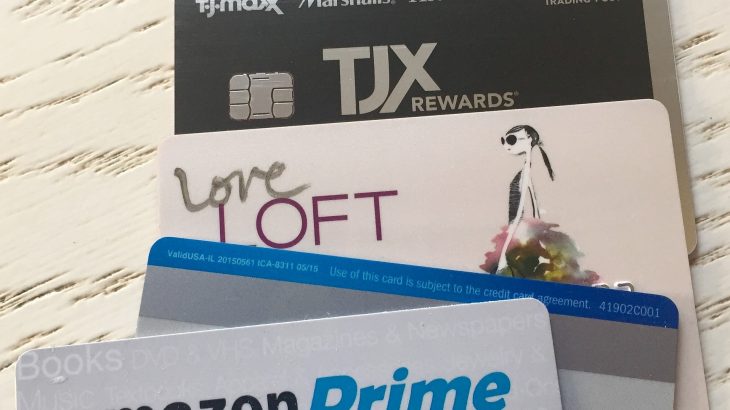Most often the discussion surrounding consumer debt focuses on how to get out of debt. Why debt is bad, and why saving money is good. In addition, debt is often a topic of interest for many personal finance books and blogs. These perspectives are educational, relevant and important to the cause and effort of understanding the debt trap. However, does it explain all the debt in America?
Discussions surrounding debt in America are understandable. The average individual credit card debt in the United States is $5,700, and household debt is a staggering $15,000. This level of debt takes a significant toll on individuals and families. Economically, it can negatively impact every area of our life. The cost of education, healthcare, our careers just to name a few.
When we look at our own personal financial situation, we most often view it from the inside out. As we personally see our circumstances. However, sometimes to better understand our own situation regarding debt and credit, it’s wise to look at this topic from a different perspective, from the outside in. And start understanding the marketing of debt in America.
Who is Selling Debt?
Let’s take a minute and set our own personal financial situation aside and look at credit from the perspective of those companies that sell or market credit-based services. From the standpoint of a bank, credit union, credit card company or any business that provides credit services as a means of generating revenue. Specifically how they market their services to get you to use credit and take on more debt.
Disclosure – I have a B.S. degree in Marketing (seriously it’s a Bachelor’s Degree in Marketing, not a “BS” degree which is what you may be thinking) and over 25 years of marketing and sales experience. So my perspective on marketing is a bit different than the average layperson. Call me a marketing geek – I am always trying to understand why and how businesses market their services – why they do what they do.
Regardless of the company, and whether it’s a line of credit, a loan, or a lease, whatever – remember this. They are all in the business of making money by providing you credit. Their credit becomes your debt.
Related Posts:
- 10 Successful Money Management Tips to Live By – from a 52-Year-Old
- Pay Off Debt Fast Using the Snowball Method
- 2 Simple Ways to Stop Using Credit to Make Purchases
- Taking Control of Your Finances in 3 Months by Letting Go of The Past
What They Understand – Debt in America
From a marketing perspective, these companies understand the credit and debt cycle. And they know their customers very well. To market their products they establish parameters around the type of individuals who use credit and why they use it. Marketing lingo calls this establishing the target market. Companies that are marketing their credit/loan products view their customers something like this.
- They understand that if you currently have credit card debt, a car loan or some other form of debt you probably find using credit as an acceptable solution to buying.
- Know that you are probably comfortable with making monthly payments for your purchases.
- Recognize that in most cases you will only make the minimum payment, and you’re comfortable with doing that.
- It is highly probable that you will carry a balance on your credit card, or not pay your loan off early.
- When purchasing an item, you’re most likely to look at the minimum payment to determine if you can afford the item, versus the long-term cost of what you will actually pay.
- Once you accumulate debt, you are susceptible to taking on more debt. And getting trapped in debt.
(If you are trying to manage your way out of debt one tool you can use to manage and monitor your credit is Credit Karma they provide a host of credit management services including identity theft protection, initial sign-up for credit scores is free, I personally recommend this service.)
Once they establish a profile (target market) of potential customers who are susceptible to getting trapped in debt. That’s when the marketing of their products and services starts.
Here are some examples of the marketing of debt in America
Automotive manufacturers and dealerships providing vehicle loans or leases.
They understand that with the continuing rise in the cost of a new vehicle that fewer and fewer individuals can afford to buy a new car. Enter vehicle financing or leasing for terms of 48, 60 and 84 months. The average consumer will purchase 6-7 vehicles over the course of a lifetime, that’s a heck of an investment. They understand that if they can convince you to finance the purchase of a new vehicle and you become comfortable with the monthly payment, you’re likely to continue to take out loans for future vehicle purchases. And it is highly probable you will take out those loans from the same dealership you started with.
In marketing it’s called “stickiness”, the ability to increase the probability you will come back to the same dealership for another car, another loan, or maintenance of the vehicle. In a way the “stickiness” effect keeps you trapped in debt.
Credit Card companies offering 0% financing on balance transfers.
0% balance transfer offers are marketed as a way of paying off higher interest credit cards or loans. However, don’t be fooled. They understand that it is probable that once you transfer your balance to them you won’t be able to pay off the balance during the 0% introductory period. Which means more interest for them. In addition, it’s even more likely that you will use their credit card for new purchases rather than just the transfer of a balance.
Big box retailers offering their own credit cards.
We have all experienced this one. You go to your favorite department store and as your checking out they offer you an additional discount if you sign up for their credit card. Of course, the goal is to have you charge future purchases on their card and carrying a balance allows them to charge you interest. In addition, that bill they send you each month, that bill provides them with another opportunity (marketing lingo = another sales channel) to market additional products to you.
And There’s More…
Credit Card Companies offering to upgrade you to one of their other “prestigious” credit cards.
Customers that already have an existing credit card with them are provided these offers. These credit cards generally offer an increased credit line, or special reward points for travel miles, or special products. Effectively what they are saying is this, “We appreciate you as a customer. We make so much money from you we would like to offer you another credit card so we can make more. Again, thank you for being our customer”. Marketing gimmicks like these are designed to get you to use more credit and increase your debt load. Have you ever noticed how many different credit card offers are advertised on TV or the Internet?
Financial institutions – banks, credit unions…whoever, offering credit cards, loans or opening up additional accounts.
This is the “stickiness” effect again. The more products or services they can provide you the less likely you will take your money somewhere else. And of course, this provides them with the opportunity to charge you interest or additional service fees.
Related Posts:
- A Personal Finance Perspective on Why Cash is King
- How Many Credit Cards Should You Have
- 4 Tips to Pay Off Credit Card Debt Fast
- Cutting Cable, Saving Money and Getting Comfortable with Feeling Uncomfortable
Understand the Why – Debt in America
The examples above have two things in common. First, they are all marketing and promotional tactics designed to make each business more money. Second, they are designed to get you to take on more debt.
The debt in America situation can’t be blamed solely on these companies. After all, the marketing of these services has developed over time and for a reason. Why? Because as consumers we place higher regard for what we are purchasing. Versus how we are making the purchase. We have become accustomed to making purchases based on a monthly payment. Rather than the “true” cost of an item. In a way, as consumers, we created the debt trap.
If you want to get out of debt, understanding your own personal financial situation is the first step. However, as I have discussed in my eBook Filling The Pig, there are many external forces that drive our decision-making process and inevitably influence our behaviors. Understanding the “why” behind the marketing of credit will help you make better decisions regarding your own personal finances.
In your efforts to eliminate debt and save cash, stay educated. Keeping you trapped in debt is how these marketing gimmicks work. Knowledge is power in your efforts to stay debt-free.
Helpful Resources:
- Credit Karma – Free Credit Score, Monitoring & Insights
- Your Money or Your Life, Vicki Robbin Your Money or Your Life: 9 Steps to Transforming Your Relationship with Money and Achieving Financial Independence
- How to Improve Your Finances by Bucking Herd Mentality



